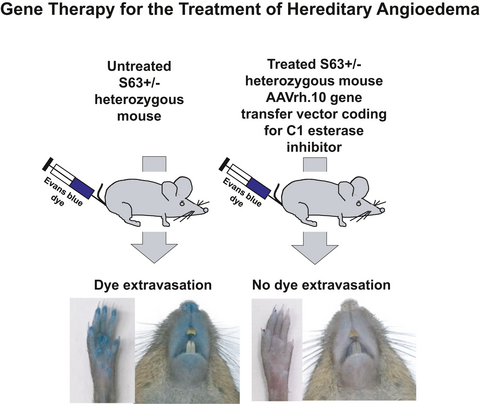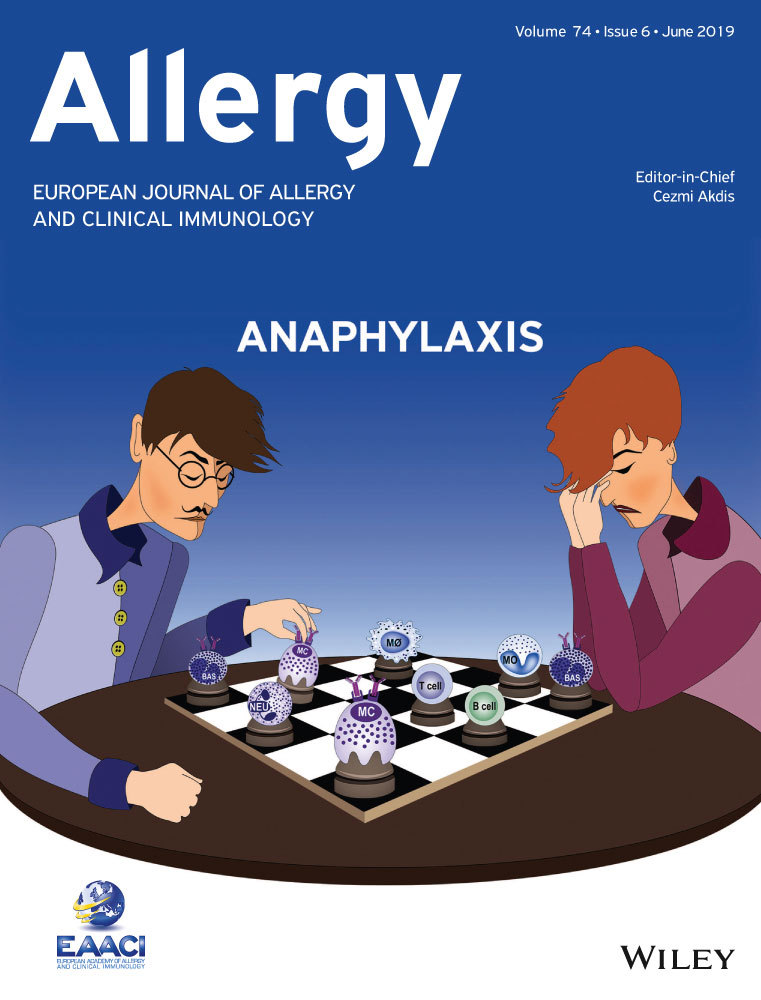Gene therapy for C1 esterase inhibitor deficiency in a Murine Model of Hereditary angioedema
Abstract
Background
Hereditary angioedema (HAE) is a life-threatening, autosomal dominant disorder characterized by unpredictable, episodic swelling of the face, upper airway, oropharynx, extremities, genitalia, and gastrointestinal tract. Almost all cases of HAE are caused by mutations in the SERPING1 gene resulting in a deficiency in functional plasma C1 esterase inhibitor (C1EI), a serine protease inhibitor that normally inhibits proteases in the contact, complement, and fibrinolytic systems. Current treatment of HAE includes long-term prophylaxis with attenuated androgens or human plasma-derived C1EI and management of acute attacks with human plasma-derived or recombinant C1EI, bradykinin, and kallikrein inhibitors, each of which requires repeated administration. As an approach to effectively treat HAE with a single treatment, we hypothesized that a one-time intravenous administration of an adeno-associated virus (AAV) gene transfer vector expressing the genetic sequence of the normal human C1 esterase inhibitor (AAVrh.10hC1EI) would provide sustained circulating C1EI levels sufficient to prevent angioedema episodes.
Methods
To study the efficacy of AAVrh.10hC1EI, we used CRISPR/Cas9 technology to create a heterozygote C1EI-deficient mouse model (S63±) that shares characteristics associated with HAE in humans including decreased plasma C1EI and C4 levels. Phenotypically, these mice have increased vascular permeability of skin and internal organs.
Results
Systemic administration of AAVrh.10hC1EI to the S63± mice resulted in sustained human C1EI activity levels above the predicted therapeutic levels and correction of the vascular leak in skin and internal organs.
Conclusion
A single treatment with AAVrh.10hC1EI has the potential to provide long-term protection from angioedema attacks in affected individuals.
Graphical Abstract
A novel murine model of hereditary angioedema (HAE) was created using CRSIPR/Cas9 technology, which reproduces the human HAE phenotype at both molecular and phenotypic levels. A single administration of a nonhuman primate serotype rh.10 adeno-associated virus coding for C1 esterase inhibitor (AAVrh.10hC1EI) results in sustained human C1EI levels above the predicted therapeutic levels and correction of the vascular leak in the skin, paws, and internal organs of HAE mice. If this strategy can be translated to humans, it would represent a paradigm shift for the treatment of patients with clinically significant hereditary angioedema.





